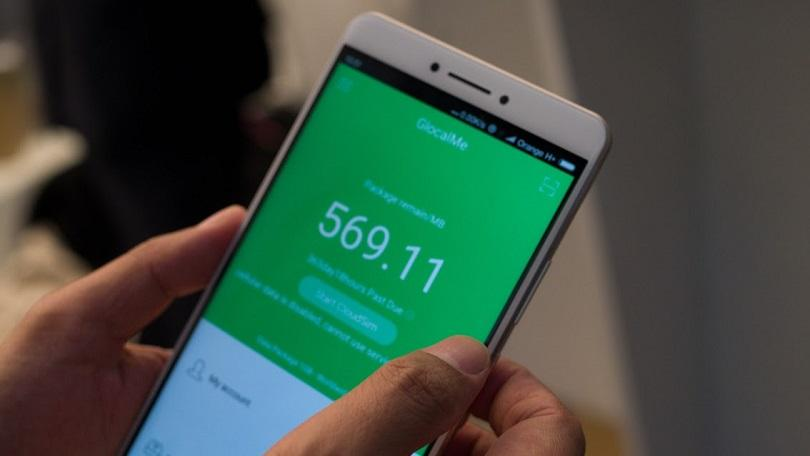Future technologies: rejection of physical SIM cards

Shot from the film “Kingsman: Secret Service” (2015)
Over the years, the device physical SIM-cards has not changed. Of course, they have decreased in size: Mini-SIM 25 x 15 mm, Micro-SIM 15 x 12 mm, Nano-SIM 12.3 x 8.8 mm. However, SIM cards retained functionality and compatibility regardless of format. And you still need to insert a small plastic card into your phone or tablet to connect to the mobile network.
When dvuhsimochnye smartphones first appeared on the market, they aroused great interest among users who tried to solve the problems of network accessibility, economy, roaming, and so on. At some point, and this way the evolution of the phones came to a standstill - it is physically impossible to establish the number of SIM-cards, sufficient to satisfy all user requests. Now there are solutions that allow you to choose any network at any time. It does not need any actions with the SIM-card itself - in the new devices it simply will not be.
eSIM
')

Every cubic millimeter of a smartphone matters when you try to create more and more complex electronics. At first they abandoned the 3.5 mm audio jack, now the relative large SIM card seems to manufacturers to be an anachronism.
Phones without SIM-cards have existed for a long time - they were used in DAMPS and CDMA-800 networks. However, such devices had a connection to the communication standard: it was impossible to change the number or connect to another operator simply by inserting another SIM card into your phone.
GSM phones without a SIM slot were introduced a few years ago. The connection of such devices to mobile communication is carried out without the purchase of an embedded card - the operator and tariff are selected in the device settings. A SIM card in the form of a microcircuit is sealed into the device at the stage of its manufacture.
The advantages of this solution are obvious: when traveling, it is much easier to switch to the local operator’s network, the problem with different sizes of SIM-cards disappears, even to free up space for new functions of the smartphone.
The Samsung Gear S2 3G was the first device to support eSIM (Embedded SIM), but the technology gained massive popularity after the release of the Apple Watch Series 3 (sales of the Apple Watch model were twice as high as those of the Series 2). Apple's solution was not without interesting features: eSIM in Watch 3 only works with the iPhone - while the iPhone and Apple Watch must connect to the same mobile operator.
iSIM
The problem of SIM-cards exists not only for smartphones, but also for smart things. Therefore, ARM has developed iSIM for all IoT devices. The new technology allows you to embed a SIM card in processors to save even more space.
The developed ARM card occupies "one square millimeter share". For comparison, eSIM, although smaller than the nano-SIM, still takes 6 x 5 mm of space on the phone.
The technology is intended, first of all, for small IoT devices - for example, for wireless sensors that need to transmit data using mobile communications. The goal of ARM is to minimize the cost of these products. In the future, technology can be used in other devices, including smartphones.
Virtual numbers
In some countries (including Russia), the SIM card is a unique subscriber ID, and connecting to an operator requires a written agreement with passport details. Using eSIM will require changes at the legislative level. An alternative option may be the technology of virtual numbers - while the physical card from the phone does not disappear, but its capabilities are greatly expanded.

Interface burner
In 2012, entrepreneurs Greg Cohn and Will Carter laid the foundations for a product that would eventually turn into a burner . This application allows users to create temporary one-time telephone numbers. However, this and similar applications can not solve all requests of subscribers. In addition, questions arise from the point of view of the security of such a decision.
BlackBerry in 2015 acquired the company Movirtu , developing the technology of virtual SIM-cards. The technology allows you to activate up to nine virtual phone numbers on one SIM-card. It is possible that the user uses one virtual number for voice and SMS, and another for mobile Internet or roaming.

Swytch interface
The Swytch app offers the features of multiple virtual SIM cards for phones with one SIM card. Swytch acts as a switch for five phone numbers, working with 4G, 3G or Wi-Fi calls, depending on what you have access to.
Other solutions
There are many ways to opt out of a regular SIM card. A single standard in this area does not yet exist, and many companies prefer to develop something of their own, rather than borrow technology from competitors.
KnowRoaming's SoftSIM is a solution used in ZTE and Alcatel phones. The application allows you to select the country in which you are located and the necessary data packets, and then pay for them without reinstalling the phone's SIM card. SoftSIM works just like a regular SIM card.
The GlocalMe project was originally a portable communication point. The gadget scans the surrounding area for the presence of 3G and 4G networks, the signals of which then convert to a Wi-Fi signal. The device used virtual SIM-card technology, supported work in 100 countries of the world and was able to transmit the signal to 5 devices.

GlocalMe Smartphone
Last year, uCloudlink introduced the GlocalMe smartphone based on CloudSIM technology. In fact, the external device was changed to an interesting technology: using the built-in eSIM chip, the phone connects to the local network and sends a signal to the cloud server to determine which of the available networks is the most suitable for the phone at a given time. Later, the solution began to be used in smartphones Xiaomi.
Gemalto eSIM either integrates or connects to your mobile device, and it has the ability to work with several mobile networks. The service is activated using the GigSky application, which allows you to choose online any suitable tariff plans depending on your current location.
Google began to introduce its own project Fi , which is not just a virtual SIM card - it’s a full-fledged virtual operator that automatically switches between networks depending on signal level and speed. A phone connected to Project Fi automatically connects to open Wi-Fi hotspots, transferring data via VPN. If during a phone call the Wi-Fi signal is lost, the system smoothly transfers the call to the cellular network without interrupting the connection.
Conclusion: are SIM cards doomed to extinction?
It always takes time to innovate. As phone manufacturers began to support eSIM and other technologies that solve SIM-card problems, it’s not long to sell new devices.
Source: https://habr.com/ru/post/351272/
All Articles